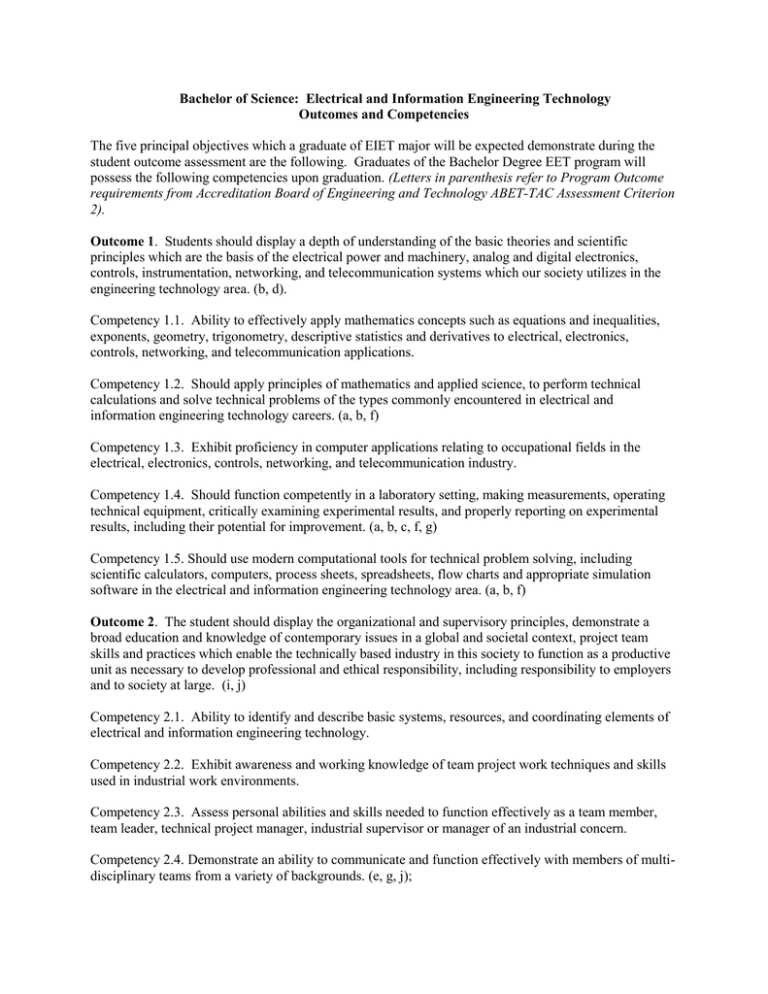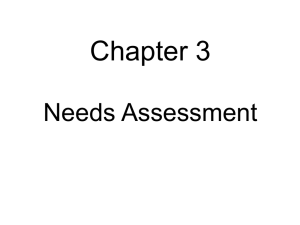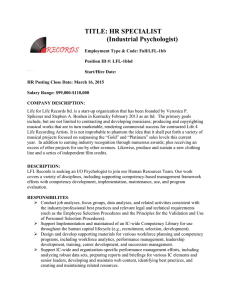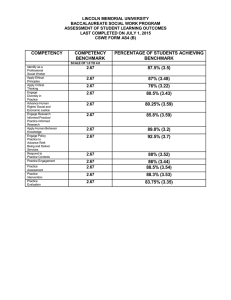Bachelor of Science: Electrical and Information Engineering Technology
advertisement

Bachelor of Science: Electrical and Information Engineering Technology Outcomes and Competencies The five principal objectives which a graduate of EIET major will be expected demonstrate during the student outcome assessment are the following. Graduates of the Bachelor Degree EET program will possess the following competencies upon graduation. (Letters in parenthesis refer to Program Outcome requirements from Accreditation Board of Engineering and Technology ABET-TAC Assessment Criterion 2). Outcome 1. Students should display a depth of understanding of the basic theories and scientific principles which are the basis of the electrical power and machinery, analog and digital electronics, controls, instrumentation, networking, and telecommunication systems which our society utilizes in the engineering technology area. (b, d). Competency 1.1. Ability to effectively apply mathematics concepts such as equations and inequalities, exponents, geometry, trigonometry, descriptive statistics and derivatives to electrical, electronics, controls, networking, and telecommunication applications. Competency 1.2. Should apply principles of mathematics and applied science, to perform technical calculations and solve technical problems of the types commonly encountered in electrical and information engineering technology careers. (a, b, f) Competency 1.3. Exhibit proficiency in computer applications relating to occupational fields in the electrical, electronics, controls, networking, and telecommunication industry. Competency 1.4. Should function competently in a laboratory setting, making measurements, operating technical equipment, critically examining experimental results, and properly reporting on experimental results, including their potential for improvement. (a, b, c, f, g) Competency 1.5. Should use modern computational tools for technical problem solving, including scientific calculators, computers, process sheets, spreadsheets, flow charts and appropriate simulation software in the electrical and information engineering technology area. (a, b, f) Outcome 2. The student should display the organizational and supervisory principles, demonstrate a broad education and knowledge of contemporary issues in a global and societal context, project team skills and practices which enable the technically based industry in this society to function as a productive unit as necessary to develop professional and ethical responsibility, including responsibility to employers and to society at large. (i, j) Competency 2.1. Ability to identify and describe basic systems, resources, and coordinating elements of electrical and information engineering technology. Competency 2.2. Exhibit awareness and working knowledge of team project work techniques and skills used in industrial work environments. Competency 2.3. Assess personal abilities and skills needed to function effectively as a team member, team leader, technical project manager, industrial supervisor or manager of an industrial concern. Competency 2.4. Demonstrate an ability to communicate and function effectively with members of multidisciplinary teams from a variety of backgrounds. (e, g, j); Outcome 3. The student should be able to exhibit effective communication strategies with members of multidisciplinary teams from a variety of backgrounds in written, oral and graphic fashion as required to function as a technically literate team member, team manager, or individual member of engineering technology society. (e, g, j) Competency 3.1. Demonstrate ability to provide effective oral presentations, with or without supplemental media, to explain a technological processes or procedures, to convince others of the value of an idea, or to solicit group/team participation or cooperation. Competency 3.2. Exhibit proficiency of written communication skills through examples such as journal abstracts, technical summaries, case studies, term papers, lab reports, senior design research proposals/reports, technical reports, and resumes. Competency 3.3. Demonstrate an ability to analyze, synthesize, and propose solutions to electrical and information engineering technological problems through individual and/or group participation in research and development projects. Competency 3.4. Develop appropriate visual aids for assisting in communicating ideas, expressing a viewpoint, describing a product of process, and/or for marketing a product. Outcome 4. Should recognize the need for life-long learning and possess the skills to maintain and improve technical and non-technical abilities. (h,k) Competency 4.1. Identify the principle needs for life-learning opportunities in the electrical and information engineering technology area. Competency 4.2. Demonstrate interest, and enthusiasm for workshops, seminars, senior design presentations, and other learning events in school and work environments. Outcome 5. The student should possess fundamental knowledge of the characteristics of the research, development, and capstone design activity in the engineering technology field such that the student can function in that setting. Competency 5.1. Able to describe the importance of the research activity in the engineering technology setting to the welfare of a technological society. Competency 5.2. Demonstrate the ability to identify, formulate, and present creative solutions to technical problems in a variety of specialty areas within the broad fields of electrical and information engineering technology. (d) Competency 5.2. Describe a typical progression of activities from applied research on a new electronic, electrical, or telecommunication concept through the development phase to integration into an existing system. Competency 5.3. Discuss major technological advances in electronic, electrical, and telecommunication systems throughout history with respect to their social, economic, and environmental significance. Competency 5.4. Display an awareness of and sensitivity to human and environmental concerns in relation to application of developments in the electrical power, analog and digital electronics, controls, networking, and telecommunication fields.






